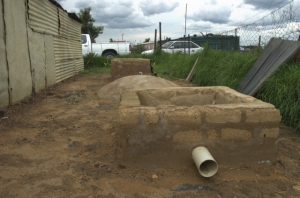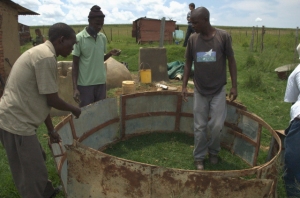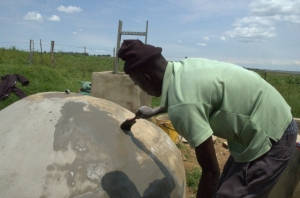On Monday and Tuesday I will be attending the inaugural South African Water and Energy Forum. This is part of my work at Nova, the organisation for whom I am currently doing contract work.
I am looking forward to this event which promises to be something special, as it will focus on developing tangible solutions to the “triple challenge” of water security, energy security and food security. A quick view of the sponsors indicates that a number of important role-players have already put their money where their mouths are. Nedbank, Eskom, Exxaro, Business Report and the US Embassy are providing the financial backing for the event which is organised by Touchstone Resources and Gleason Publications.
Looking at the list of South African and international speakers, one gets the impression that there won’t be a lack of expertise and that a wide variety of disciplines will be represented. According to the SAWEF website, the Forum will examine and address the following themes:
- Water as a scarce and dwindling resource in an increasingly dry climate;
- The water/energy/food security nexus with a view to developing tangible goal-oriented outcomes in the form of PPP’s or collaborative solutions
- The shifting water paradigm’s impact on corporate South Africa and expanding the risk profile of water issues and its impact on business
- Utilising the vast AMD resource in the Western Basin
- Assessing the thorium option for nuclear power generation
- Highlighting technological advances in water treatment and power generation
- Elements of urban planning & architectural design relating to water infrastructure
By the way, PPPs are Private-Public Partnerships and AMD is Acid Mine Drainage, which is currently a hot topic as mega quantities of water that have filled old mine shafts, have become extremely toxic because of acid, salts, heavy metals and radioactive material that’s moving closer and closer to the ground surface in Gauteng and other places.
My direct interest in the forum is really the opportunity for networking and informal discussions with potential funders/investors of the Nova project that I am involved with.
Last week I visited Nova’s biogas project in KwazaMukuhle, a township close to the small town of Hendrina, Mpumalanga. What excites me about this project is the fact that the
biogas digesters are designed and developed by a small group of township residents who build these with material that is typically available in townships. But it’s about much more than simply a product that could generate renewable energy for low-income households. It’s also about more than a potential sanitation solution and the protection of water resources.
These men have gone through an intensive training process that empowered them to understand the concept of methane gas that can be generated from cow dung and even sewage, to innovatively experiment with a wide range of materials and designs, to solve problems and to build structures.
Riaan Ingram, the Nova facilitator who worked with the men over a period of about two years, says that he avoids giving advice and instead keeps throwing questions back to the group, forcing them to come up with their own solutions. This means that the group owns the concept, and that the project has a very strong element of sustainability built into the core, right from the start.
Here are a few photos I took in KwazaMukuhle and on a small farm outside Hendrina:

The Research and Development team at a shack in Kwaza where they installed a biogas digester.

Cow dung is fed into the square in the background. Methane gas is generated in the dome and the effluent, which can be used as fertiliser, runs into the square in the forefront.
During the next phase a pipe will be connected to the dome that will run into the house where the gas will be used for things like cooking and lighting.

Bricks are made by mixing cow dung, soil and salt and by pouring that into self-made brick moulds.

When the hole for the dome is dug, the team assembles the mould for the wall. They then pour the same mixture used to make bricks, between the mould and the sides of the hole.
They remove the mould after the mixture has set and then build the dome on top of the underground cylindrical wall.
- Painting the dome with a mixture of salt, cement and water seals the cracks. This is an old “boereraat” (farmer’s tip) for sealing cracks in cement dams.

Candle wax is melted on a coal stove. A mixture of melted wax and paraffin is burnt into the insides of the digester to make it gas proof.
Source:http://nextchurch.wordpress.com/2011/02/13/403/












 The project objective is to demonstrate the possibility of using
The project objective is to demonstrate the possibility of using 
